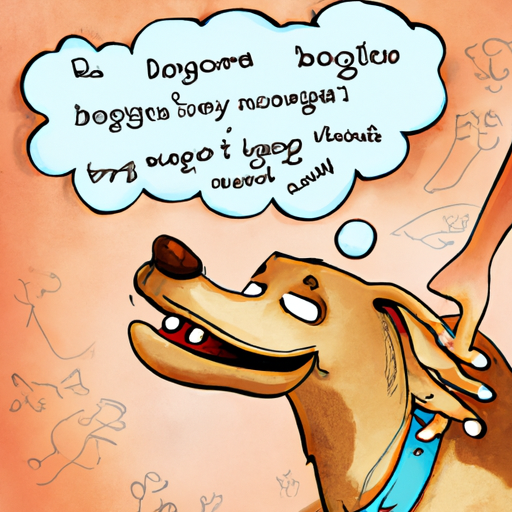Have you ever wondered why your furry friend is always begging for a good scratch? It seems that no matter how much you pet them, they always want more. Well, there’s actually a scientific reason behind this behavior, and it has to do with your dog’s anatomy, psychology, and some evolutionary factors.
The Science Behind the Scratching
Dogs have a higher density of nerve cells in their skin compared to humans. These nerve cells are specifically designed to detect and transmit the sensations of touch and pressure to the brain. It’s like having a super-sensitive, built-in massage system.
When you scratch your dog, these nerve cells send signals to the brain which releases endorphins – the “feel-good” hormones. These endorphins are similar to the ones released when humans exercise or experience pleasure. The release of these endorphins gives your dog a sense of satisfaction and relaxation.
The Evolutionary Perspective
From an evolutionary standpoint, dogs being scratched is a form of social grooming, a behavior that’s common in many animals. In the wild, dogs would groom each other to remove parasites and dirt, strengthen social bonds, and demonstrate trust and submission.
Even though your dog may not be grooming others in your home, the act of being scratched still triggers these deeply ingrained instincts. Your dog associates the physical contact with the feelings of safety, trust, and being cared for.
The Power of Positive Reinforcement
Another reason why dogs like to be scratched is due to the power of positive reinforcement. When you scratch your dog, you’re showing them affection.
Over time, your dog learns to associate the action of being scratched with the positive feelings of love and attention. This results in them seeking more scratches from you. It becomes a way for them to interact and bond with you.
Where Do Dogs Like to Be Scratched?
While every dog is unique, there are some common “scratch zones” that most dogs seem to enjoy:
- Behind the ears: This area is full of nerve endings that make it particularly sensitive.
- Base of the tail: Many dogs enjoy a good scratch here, probably because it’s an area they can’t easily reach themselves.
- Belly: Belly rubs are a favorite for many dogs. This area is very sensitive, and a rub or scratch here can be very soothing.
Table 1.1 Common “Scratch Zones”
| Scratch Zone | Description |
|---|---|
| Behind the ears | An area rich in nerve endings. |
| Base of the tail | An area dogs can’t easily reach themselves. |
| Belly | A sensitive area that’s very soothing when scratched. |
The Health Benefits of Scratching Your Dog
Beyond making your dog happy, scratching and petting your canine companion can have health benefits. These include:
- Reducing stress and anxiety: Physical contact increases the release of oxytocin, a hormone that reduces stress and anxiety.
- Improving socialization: Regular contact can help shy or anxious dogs feel more comfortable around humans.
- Detecting health issues: Regular petting allows you to check for lumps, skin issues, or changes in your dog’s coat.
Frequently Asked Questions (FAQs)
1. Is there such a thing as too much scratching?
Yes, excessive scratching or petting could potentially lead to skin irritation or discomfort. Always be gentle and observe your dog’s response.
2. What if my dog doesn’t like to be scratched?
Each dog is unique. Some might not enjoy being touched as much as others. It’s essential to respect their boundaries and find other ways to show affection.
3. Can scratching my dog improve our bond?
Absolutely. Physical contact, like scratching, is a form of communication that can strengthen your bond with your dog.
4. How can I tell if my dog is enjoying the scratch?
Common signs of enjoyment include a relaxed posture, closed eyes, and a wagging tail. If your dog moves away or shows signs of discomfort, it’s best to stop.
5. Can all dogs benefit from the health benefits mentioned?
Yes, all dogs can potentially benefit from the health advantages associated with scratching and petting. However, the extent of these benefits may vary depending on the dog’s health status and individual personality.
Understanding why dogs like to be scratched not only satisfies our curiosity but also helps us provide better care for our beloved canine companions. So go ahead, give your dog a scratch. It’s a simple act of kindness that can make a world of difference to them.



